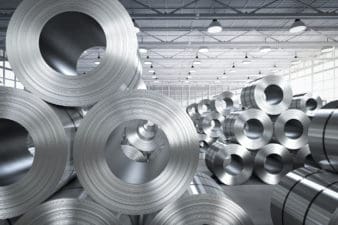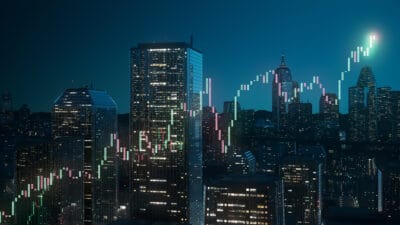There’s no doubt that clean energy is a great long-term investment. We’ve seen many of these companies go public recently. In addition, we’ve seen more major energy companies or power producers investing in renewable energy themselves, sometimes buying out up-and-coming companies altogether. And while the whole industry will offer opportunities for growth over the next several decades, some of the highest potential opportunities lie with cleantech stocks.
These days the importance of cleaning up our emissions and switching to clean energy is no longer up for debate. Countries and massive companies continue to commit to cleaning up operations. What’s beneficial for a lot of these companies and countries is that costs have come down dramatically for cleaner energy and are now much more competitive.
And while we have started to make good progress, reports continue to show it’s not enough. Renewable energy generation and switching to electrifying the transportation industry will only go so far.
There is a tonne of other industries that commit a significant amount of emissions. For example, as Bill Gates has pointed out in one of his past blog posts, if cows were their own country, they would be the third-biggest greenhouse gas emitters in the world.
Its industries like cattle and agriculture where cleantech stocks could be crucial for our environment. In the past, the industry had been in its infancy, and there were tonnes of small startups all with different potential ideas for technology. However much of it was costly and therefore not economically viable for companies to buy.
Today, the technology is getting much better, and while some could argue it’s still a little early for the industry, this is one of the best times to consider an investment, especially if you want to be in on the ground floor.
So if you’re looking for a high-potential, long-term growth stock, and also want to help contribute to a cleaner atmosphere and environment, here are the top cleantech stocks to consider today.
Xebec Adsorption: A high-potential cleantech stock with hydrogen exposure
Xebec Adsorption (TSX:XBC) is one of the leading cleantech stocks you can consider today. Xebec designs, manufactures, sells, and services equipment that transforms raw gasses into renewable natural gas as well as hydrogen.
The company saw significant growth last year as the industry benefitted from an increase in popularity and the company continued to expand its business operations well; however, as can be expected with an industry that’s still in its infancy, higher costs and a longer timeline for completion of new projects led to lower revenue and higher expenses, which severely impacted the stock price.
While this is unfavourable, it’s just a reminder of the risks of investing in companies on the ground floor and the long-term commitment required. And hopefully, though with the recent improvement in its margins in the third quarter, the stock can now turn its operations around.
In the third quarter, Xebec reported revenues of $26.7 million a 45% gain compared to a year ago. Even more notable is that its gross margin improved from 24% to 38%. Furthermore, it also reported positive EBITDA.
So if you’re looking for a top cleantech stock to buy now, Xebec is trading at a forward enterprise value to sales ratio of 3.1 times.
Greenlane Renewables: A high-quality stock that looks undervalued
Greenlane Renewables (TSX:GRN) is a stock that sells similar equipment, except without hydrogen exposure. The company is a leading global provider of biogas upgrading equipment.
At its recent earnings report, Greenlane recorded sales of $13.4 million, almost exactly half of what Xebec did. However, it grew its sales more impressively, up 107% from last year. And possibly even more notably is that Greenlane managed to earn a slight profit.
At this point in the industry’s growth, and with the difficulty of building cleantech equipment, the growth of the margins and profitability is just as important as the growth in revenue.
So with the cleantech stock trading at a forward enterprise value to sales ratio of just 3.4 times, it offers investors a tonne of potential for growth over the coming decades.







